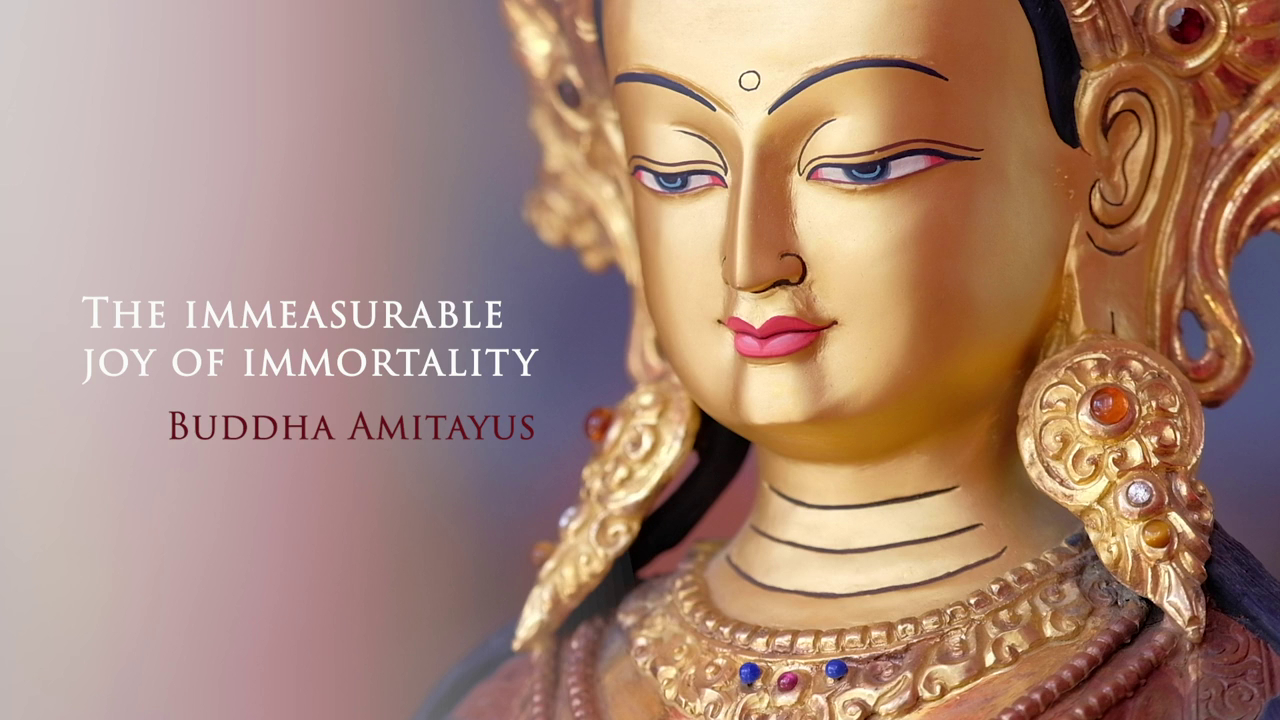Cutting the Roots of Craving
Desire is beginningless. Yet through right mindfulness we can learn to abandon it. The post Cutting the Roots of Craving appeared first on Tricycle: The Buddhist Review.

Craving sews one life to another. It is like moisture that exhibits the property of adhesion and keeps us glued to the cycle of samsara. Everything we do pivots around craving because it is deeply entrenched in our minds and lives. Like a magnet with a powerful attractive force, it brings about rebirth when combined with ignorance, kamma, and consciousness. Craving, along with ignorance, is the link from one life to the next. But due to ignorance we do not see the danger in craving, which is why it has such a dominating and self-generating power. Even though craving is impermanent it repeats itself, along with delight and attachment. Its insatiability is such that it yields more craving, and as a result it leads to renewed existence in samsara.
We constantly try to satisfy desire in this life. However, we are never fully satisfied, and thus we keep repeating the endless chase to fulfill our desires. This quest goes on day after day, month after month, and year after year. In fact, it consumes our entire lives. And whenever we ask ourselves the question “Am I satisfied?” we always get the same answer: “Not yet.” There is always another desire that is not yet satisfied. With these unfulfilled desires in the mind, our lives come to an end at some point, and we die hoping to satisfy them in our next life. But there we find ourselves in the same predicament, as desire arises from the same places.
Hence, there is seemingly no end to this. This is why the Buddha said that the beginning of desire is indiscernible. There is no point in time before which a state of desirelessness can be found. To make matters worse, the presence of ignorance in the mind blocks clear understanding. Therefore, when our mind is fettered by desires and our view is blocked by ignorance, the result is endless rounds of death and rebirth in samsara. This situation seems at first quite hopeless. However, the Buddha did find a way out, the method to end this cycle. That which can end samsara, this endless cycle of birth and death, is called the dhamma. And when the Buddha went to Benares to teach his first sermon, he started rolling the wheel of dhamma to end it.
Even though the dhamma cannot be seen with the eyes, it remains our escape hatch from suffering. In the same way, even though samsara is invisible to the eyes, the workings of the mind that trap us in it—jealousy, greed, craving, and suffering—can be directly experienced. All these factors are mental states that can be perceived not by the five physical senses but by the mind. So can we see the invisible dhamma with the invisible mind? At this very moment, while reading these words, you can see your invisible mind and the invisible dhamma. You can experience mental states arising from seeing the words on the page and from understanding or not understanding what you are reading. You are the only one who can see the dhamma cycle happening in your own mind.
In The Discourse on the Great Causation the Buddha explains that in dependence upon feeling, there is craving. In dependence upon craving, there is pursuit. In dependence upon pursuit, there is gain. In dependence upon gain, there is decision-making. In dependence upon decision-making, there is desire and lust. In dependence upon desire and lust, there is attachment. In dependence upon attachment, there is possessiveness. In dependence upon possessiveness, there is stinginess. In dependence upon stinginess, there is safeguarding. Because of safeguarding, various evil, unwholesome phenomena originate. These unwholesome acts involve warfare, fighting, quarrels, slander, insulting speech, and lies.
Everything happens in your mind. When you talk, write, perform any deed whatsoever, watch your mind at all times in order to guard it against defilements and prevent craving from invading it. You should never put the blame on anyone else for your moods. You must not point a finger at others when things do not go according to your liking but rather at yourself. Look at your own mind to see the invisible greed, anger, jealousy, and all the other defilements that are the real cause of your suffering. Looking at the mind must be done objectively, without a sense of guilt or self-deprecation and without trying to uncover an external cause of depression or blaming others or your circumstances. Look at your mind. You created it. Thus, you are responsible for its moods. If you create a wholesome state of mind, you are responsible for this. Likewise, if you create an unwholesome state of mind, you are also responsible for the moods that such a mind brings.
Therefore, this invisible cycle is in you. And the way to end this cycle of birth and death is in your mind right now. If you end greed now, you attain liberation now. If you end greed one minute later, you attain liberation one minute later. If you end greed tomorrow, you attain liberation tomorrow. Henceforth, the end of this beginningless cycle of samsara is in sight. It is within our power, will, mindfulness, practice, determination, and commitment. When we make this kind of commitment, we can end this cycle whenever we choose to do so.
The way to end this cycle of birth and death is in your mind right now.
It is craving and ignorance that ensnare us in this cycle of repeated life and birth. This was the Buddha’s insight that led him to discover dependent origination, which lays out the causes and conditions resulting in repeated rebirths. Therefore, when the Buddha attained enlightenment he declared, “The eye arose in me.” This is the eye of wisdom that arose when he saw dependent origination, and with it he saw the beginning and end of craving and the cycle of samsara. Craving can be found in our very own mind. Understanding it is a personal exploration that must be undertaken individually, for the solution to abandon it is also in our own minds.
People sometimes say that they want to experiment with sensual pleasures: trying a particular kind of food or drink or indulging in a certain sensory experience. Before his enlightenment the Buddha experimented too. However, he had the insight to conclude that there would be no end to this exercise and that this type of behavior would keep him in bondage indefinitely. He understood that there is a great danger in sensual pleasures—not that they cause immediate harm or risk to one’s life (although some sensory pleasures can definitely be lethal) but that sense enjoyments are impermanent. And because they are impermanent they can never be satisfactory.
And so, understanding this, the Buddha began searching for something else. His deep insight led him to the complete abandonment of sensual pleasures. This point must be properly understood: This abandonment is not the forceful shunning of pleasurable sensation as in sense mortification. Rather, it is the wisdom to see the danger and degradation in these pleasures.
When we acquire a possession with greed, we stingily hold on to it and go to great lengths to protect it, thereby accumulating much stress. Craving is the cause of many personal and social problems. Therefore, the solution to these problems is to remove craving, which is attained by abandoning our attachment to sensual pleasures. Note that the key word here is attachment. Letting go of attachment does not mean that we must torture ourselves and make abstractions of what is necessary to live a happy and healthy life. We must use our senses, but we must do so with wisdom, because with wisdom we understand how the influxes of sensual pleasures, becoming, ignorance, and wrong views operate in us. The mind should always be ready to apply itself to restraining the influxes. And mindfulness is the tool we use to apply it.
Mindfulness has become a cliché, but it must be properly understood for one to avoid practicing it the wrong way. And what is the difference between right and wrong mindfulness? When planning an unwholesome deed, the mind can be focused and concentrated in order to achieve the goal at hand, but this is still wrong mindfulness. Right mindfulness, on the other hand, is always wholesome and beneficial.
If you have practiced mindfulness your entire life, constantly thinking about its practice, focusing on the breath at every moment, and have not reduced greed by one iota, then you have been wasting your time and practicing wrong mindfulness. But if your mindfulness leads to reducing your greed, hatred, and delusion, it is right mindfulness, and every minute of this practice is beneficial. Practicing right mindfulness does not mean that you have to sit in one place all day long. It can be practiced anytime, anywhere. Anytime greed arises, one becomes aware of it and lets it go.
Ideally mindfulness is present all the time, whether we sit with our eyes closed in meditation or are fully involved in activities. Right mindfulness is therefore a constant practice, a personal attainment that has nothing to do with mere theory. This repeated practice makes mindfulness strong and so powerful that one day one is able to overcome greed, hatred, and delusion. Of course this does not happen suddenly but bit by bit, moment by moment.
Mindfulness is a means for overcoming craving. It is not always present; it arises and passes away depending on the situation. When whatever conditions responsible for the arising of craving pass, so too does craving. Consider the following analogy laid out by the Buddha. Suppose there were a great tree with all its roots going downward and across. That tree would be sustained and well nourished by its sap, and it would stand for a long time. In the same way, sense gratification, born out of ignorance, keeps us in a state of suffering, going endlessly through the cycle of birth and death. Now, suppose that someone cut the tree down at the base and put the trunk back in place so that the tree would look whole once more: that tree would still never grow again. Cutting down the tree can be likened to the destruction of craving. This reflection on the arising and ceasing of craving is of the utmost importance to help us understand craving and so put an end to it.
◆
© 2024 by Bhante Gunaratana and Veronique Ziegler, Dependent Origination in Plain English. Reprinted by arrangement with Wisdom Publications.

 Troov
Troov 






















![Run An Ecommerce SEO Audit in 4 Stages [+ Free Workbook]](https://api.backlinko.com/app/uploads/2025/06/ecommerce-seo-audit-featured-image.png)









